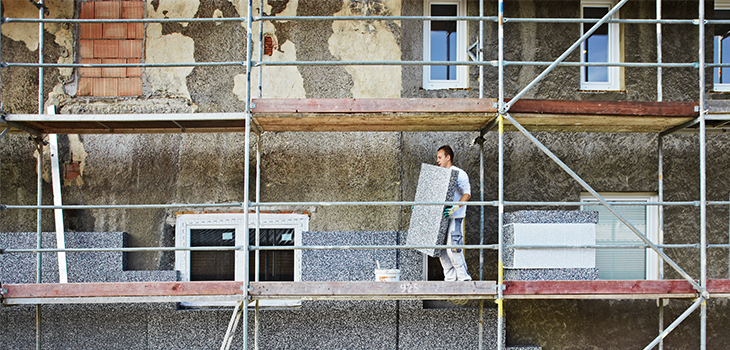The Renovation Wave will set the standard for renovation projects within the European Union for the coming years, and we will be living with the results for decades to come. But is there a risk that we look at renovations from a too narrow perspective? What can we as building sector professionals do to unleash the full potential of the initiative?
In mid-October, the European Commission presented its Renovation Wave Strategy to improve the energy performance of buildings. The building sector has a huge potential in terms of energy and emissions savings, and in order for the EU to reach its target of a climate-neutral Europe by 2050, this is one important step.
The building sector is responsible for more than one third of the emissions within the EU and roughly 75% of the building stock is currently energy inefficient. An estimation also shows that 85-95% will still be standing in 2050. This means that focusing on energy efficient new-build is not enough, we need massive renovation efforts in order to reach our energy and climate targets.
The Commission plans to renovate 35 million buildings
Today, around 11% of the building stock in the EU undergo some sort of renovation, however very rarely the renovation addresses the energy performance of the building. The Commission plans to double the EU’s annual rate of energy-related building renovations, which is currently just 1%, by upgrading 35 million buildings by 2030.

Renovation can be complex and held back by different barriers. The Renovation Wave proposes ways to handle these barriers by simplified rules for funding, a push for energy performance certificates for buildings and a move towards expanding the market for sustainable construction products and services.
Funding should prioritize renovations that tackle energy poverty to support the 34 million Europeans struggling to pay heating bills, the Commission said. Other focus areas are public buildings, such as schools, hospitals and administrative buildings and polluting heating systems.
The Renovation Wave will boost the construction sector and strengthen Europe’s industrial competitiveness for the post-pandemic economic landscape. The Renovation Wave could lead to an additional 160 000 jobs in the EU construction sector.
How can we make it into a real game changer?
The Renovation Wave will probably have a major impact on its primary target – energy efficiency – and it’s a great initiative to boost the environmental thinking within the industry. But when addressing issues about the environment, we should not forget about the indoor environment. With renovation projects starting on an unprecedented scale, we can not afford to be too narrowly focused on the energy aspects alone, since it’s not the only building-related challenge we face.
Sub-standard indoor environments already hurt us from a health perspective today and make us less productive in workplaces and less receptive as students in schools. The Renovation Wave is not just a rare opportunity to improve the energy efficiency of our buildings, it’s also a fantastic chance to improve indoor environments as well, and from a technical perspective these issues are closely linked. There are smart products and systems available today that will solve both issues at once, and we need to keep both targets in mind at once. We will live in with the results of these renovations for many years, and so we should make sure to make the best of it.
The Renovation Wave will affect most of the 445 million European Union citizens and 90 million students and pupils in some way, either at home, at work or at school, so just think what the effects of better productivity and health will mean - so let’s get to work!
#feel good inside





-Aug-16-2023-12-30-41-3641-PM.png?width=75&name=MicrosoftTeams-image%20(3)-Aug-16-2023-12-30-41-3641-PM.png)






.jpg?width=75&name=sigvardsson_220628_0008_small_webb%20(1).jpg)












.jpg?width=75&name=magnus%20andersson_550x550%20(1).jpg)











-4.png?width=75&name=MicrosoftTeams-image%20(3)-4.png)











